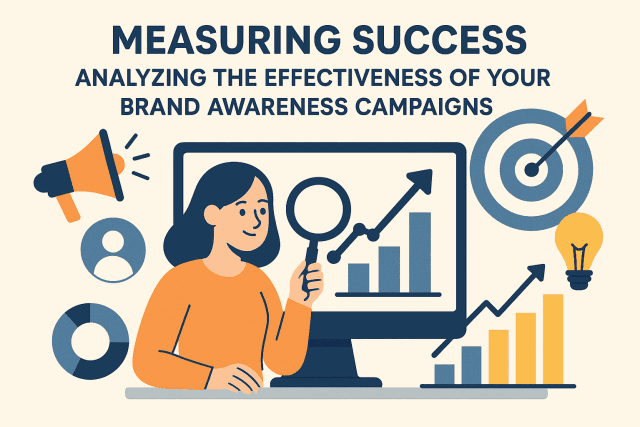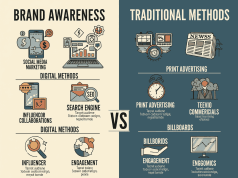In today’s fiercely competitive marketplace, brand awareness is more crucial than ever. It forms the foundation upon which customer loyalty, trust, and ultimately converts leads into sales. However, merely launching a brand awareness campaign is not enough; evaluating its effectiveness is essential for ensuring a good return on investment. Here’s how you can measure success and refine your strategies for maximum impact.
Understanding Brand Awareness
Brand awareness is the extent to which consumers recognize and remember a brand. It can be categorized into:
- Aided Brand Awareness: Recognizing a brand when prompted.
- Unaided Brand Awareness: Recall of a brand without any prompts.
Effective brand awareness campaigns not only increase recognition but also create a positive association with the brand, influencing consumer behavior.
Key Metrics for Measuring Brand Awareness
1. Surveys and Questionnaires
One of the most direct methods for measuring brand awareness is through consumer surveys. Ask open-ended questions:
- "Which brands come to mind when you think of [product category]?"
- "How did you first hear about our brand?"
Metrics derived from these surveys can provide qualitative insights into brand perception.
2. Social Media Engagement
Social media platforms are powerful tools for measuring brand awareness. Track metrics such as:
- Followers and Page Likes: An increase indicates growing interest.
- Shares and Retweets: When users share your content, it amplifies your reach.
- Comments and Mentions: Positive comments or mentions can indicate brand affinity.
3. Website Traffic and Search Volume
Monitoring your website traffic can provide insights into the effectiveness of your campaigns. Utilize tools like Google Analytics to analyze:
- Organic Traffic Increases: A spike in visits suggests heightened brand interest.
- Direct Traffic: Users searching for your brand name indicate recognition.
Additionally, tools like Google Trends can be used to track changes in search volume associated with your brand.
4. Brand Sentiment Analysis
Brand sentiment measures consumer attitudes towards your brand. This can be gauged through:
- Social Listening: Analyze conversations about your brand across social media and forums.
- Sentiment Analysis Tools: Use automated tools to assess whether the tone of the discussions is positive, negative, or neutral.
A favorable sentiment indicates a successful campaign, while negative sentiment may need quick rectification.
5. Media Coverage
Brand awareness can also be evaluated through the amount of media coverage your campaign garners. Track:
- Press Mentions: The quantity of articles, blogs, and features discussing your brand.
- Influencer Partnerships: Collaborating with influencers can expand your brand’s reach and create credibility.
Analyzing ROI
Assessing the return on investment (ROI) for brand awareness can be tricky, but is essential:
- Attribution Models: Use multi-touch attribution models to analyze which interactions contributed to awareness and conversions.
- Cost Per Impression (CPI): Calculate the cost incurred for every impression generated by your campaign.
- Customer Lifetime Value (CLV): Understand the long-term value of acquired customers through brand awareness.
Adjusting Strategy Based on Findings
Measuring effectiveness isn’t just about analyzing data; it’s about acting on it. Here’s how:
- Optimize Content: Use insights from engagement data to tailor your messaging and visuals.
- Reallocate Budget: Shift resources to the channels driving the most engagement and recognition.
- Expand Campaigns: If a specific demographic responds positively, consider creating targeted outreach efforts for that audience.
The Importance of Continuous Measurement
Brand awareness is not a one-time effort but requires ongoing evaluation. Regular assessment ensures that your campaigns remain relevant in a fast-changing market landscape.
Conclusion
Measuring the effectiveness of your brand awareness campaigns is vital for ensuring your marketing efforts lead to genuine, long-term growth. Through a combination of surveys, social media analytics, website traffic, sentiment analysis, and thorough ROI evaluation, you can create a comprehensive picture of your brand’s standing. By leveraging these insights, you can continuously refine your strategies, ensuring your brand resonates with consumers in meaningful ways. Ultimately, successful brand awareness equates to a robust relationship with your audience—one that enriches both your brand and your bottom line.









